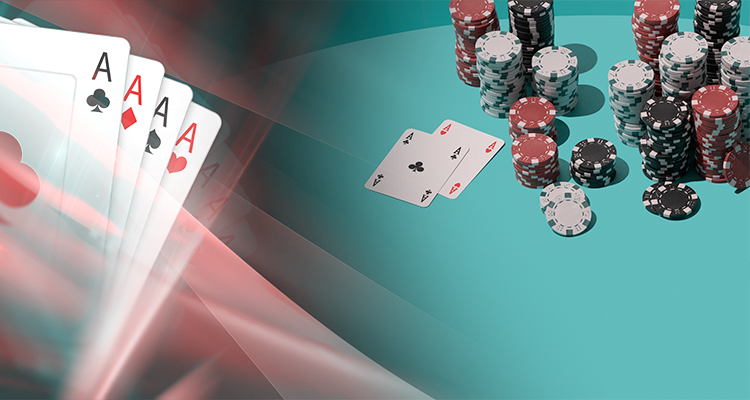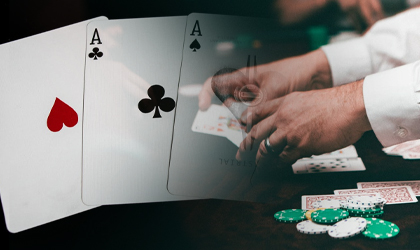Starting Your Poker Dynasty, Part 2

Steve Curtis 02:34 May 15th, 2006 Poker
In the last article we talked about setting goals, bankroll management, player notes and tracking software. In this article we will look at the value of position. This is a large subject and will be covered alone. In part 3 we will go over Sit and Go tournaments and avoiding the tilt monster.
Position
 One of the most important factors to consider when you are about to enter a hand is your table position. There are five basic positions while sitting at a poker table. Although these can be broken down into three basic positions early, middle, and late, we’ll look at each position individually to offer even more insight into each position.
One of the most important factors to consider when you are about to enter a hand is your table position. There are five basic positions while sitting at a poker table. Although these can be broken down into three basic positions early, middle, and late, we’ll look at each position individually to offer even more insight into each position.
1. The Blinds
2. Early Position
3. Middle Position
4. Late Position
5. Dealer (also known as the button)
While everyone wishes they could be on the button it is not feasible to expect that you can only play button hands be profitable, but we’ll get to button play last.
For now let us look at blind play. If you are the big blind (BB for the rest of the article), you already have the minimum bet posted and if no one raises you see essentially a free flop. This is a huge advantage for playing in loose passive games as a lot of people try to see a flop for the minimum bet. If your BB is raised then it is easy to toss a garbage or marginal hand as you were forced into action anyway. If you are the small blind (SB for the rest of the article), then you have a portion up to half of the minimum bet on the board. If you see a marginal hand that you may want to get in cheap for call the BB and hope he doesn’t raise, and you might catch lucky. Only raise with premium or top ten hands while you are in the blinds or if you suspect weakness in your opponents as your notes and tracking software may suggest.
Early position, the spot and perhaps two spots after the BB. This is another spot where marginal and garbage hands are easy to toss as there are still others to act after you that may have you dominated. Also this is the spot where you don’t want to be a calling station, if you must stay in EP raise, put the pressure on your opponents to call two bets, don’t offer marginal late position hands to stay cheap and get paid off big. This one is the other spot where premium hands are an almost must to stay in the hand.
Middle position, the spots after the two EP spots and before the late position seats. This is an area where you can look at the marginal hands and wager a guess that if you call there may not be a raise as well as if you raise there may not be a call. If you have a premium hand, jam the pot. If you choose to play with a marginal hand such a 9-10 suited limp and hope you hit. If you miss the flop, bow out early and save the rest of your chips. This is a spot where discipline is a must. You must be a solid player to play marginal hands to begin with, and the ability to fold after you have money in the pot is one of the most under appreciated skills in poker. Watch your late seats here if you have notes on them use your best judgment, if you don’t have notes yet, use caution.
Late position, the two spots prior to the button and sometimes includes the button. This is the spot where you can play any two cards if you have the discipline to know when you are beat. Also this is the best spot to have a premium hand as if you see someone two bet the pot, you can smooth call, or keep jamming, me personally I like to avoid cute plays and jam the pot. Your hand is more likely to hold up against fewer opponents and you can get the most value out of hands by jamming.
The button is the best position as you are guaranteed to act last. If everyone folds to you and its just you and the blinds sometimes you can raise here to try to steal the blinds. This is an effective way to at least keep your blind money for each orbit around the table, but use caution as you may or may not have notes on the blinds, they may be defenders. This position is tricky but by far the most profitable you can play as you can stay in all un-raised flops with marginal hands, premium hands and just plain gut feeling hands, for example I like to play hands that have meaning in my life, like 8-9 suited or not that’s my dads girlfriends birthday, and it is a hand that I try to get cute with when I have a gut feeling. The reason you can make plays like this is you act last and if you catch you can raise or call, and if you miss its not hard to toss or even check to see a free card, you control the free card. Try to use this as a small reference to improving your game by paying attention to position.
Examples of Position Play
You are the BB. You have the luxury of watching the table unfold before it is your turn to act. You look at your hole cards, you see As Kc. Not too bad for a BB hand. An MP raises and an LP calls it only costs you one more bet to call two. You say to yourself it is worth it and call. The flop is Ac Jd 4h. You are now first to act as the SB folded. You see you have top pair top kicker, but are in danger of any pocket pair of A’s J’s or 4’s as well as two pair. This is where I like to try to gather info by placing a bet. If MP or LP raises I may be in trouble. If they just call I know that I am more than likely in pretty good shape. They both just call and now you feel really good about your hand. The turn and the river are both rags and after a bet on the turn and LP folding, you bet the river feeling even more confident. MP calls and shows AQ and you take down a decent pot by playing fairly sound poker. This same advice can hold true for the SB as well.
You are in early position. You now have to act early. You look down and see 8s9s. They are suited connectors not worthy of a raise or calling and hoping to see a cheap flop, because if an LP or Blind raises now you’re paying at least two bets to see the flop. You have a gut feeling though and call. Dealer raises, SB raises, BB caps. You are now forced to put 3 more bets in to see the flop. But you call because your gut tells you to (instinct is a part of poker but don’t let it cloud better judgment). Dealer, SB call. The flop comes up As Js 3d. Now you’re stuck until the river. SB bets, BB calls, you should just call here but think about a raise, and you end up calling, dealer raises SB re-raises BB, you call dealer calls. Now you are in the pot for 7 bets, now that spade showing up is a good thing but don’t underestimate someone having a larger flush draw. Turn is 4h. Now SB, BB, you check dealer bets, SB raises BB folds, you call dealer calls. River is a useless 7c. SB bets you now wasted half your stack on a draw in EP and a pair of A’s take down the pot. Beware of drawing hands in early spots. You wont have enough info on your opponents to make proper reads.
MP, LP and dealer just expand your hand selection a little to include those suited connectors. When you get monsters jam, when you miss the flop check or fold. It is very simple play with your head and not with your heart and hold’em wins will come. Patience is a virtue when playing a very up and down game. Keep an eye on your statistics and try to keep your hands played, flops seen in the low 30’s at a high, and between 20-25% for a solid starting off point. This will help you avoid short playing sessions and add to your overall experience.
On This Page



